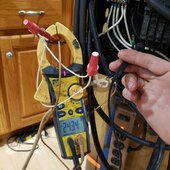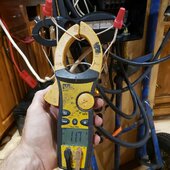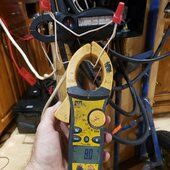Texas-Mark
Solar Addict
- Joined
- Aug 4, 2021
- Messages
- 1,514
So, now you think - great I will double up all my wires and they will be cooler. But, now look at the resistance
And, just like with batteries with uneven internal impedance there will be a small but noticable difference in current carried..
4/0 wire has 0.0314Ω per thousand foot
4 awg has 0.0792Ω per thousand foot
so - 2 x 4awg has 0.0396Ω per thousand foot.
Now do the math for 2ft of each setup carrying 150amps. Both class T JLLN style.
Based on your resistance figures, two feet at 150 amps:
4/0 awg = 0.0000628 = 0.00942 volt drop = 1.413 watts dissipated
2 x 4 awg = 0.0000792 ohms = 0.00942 volt drop = 1.414 watts dissipated








